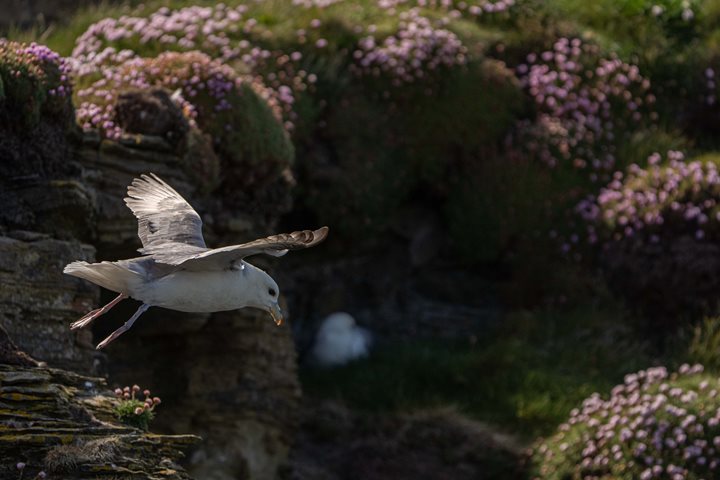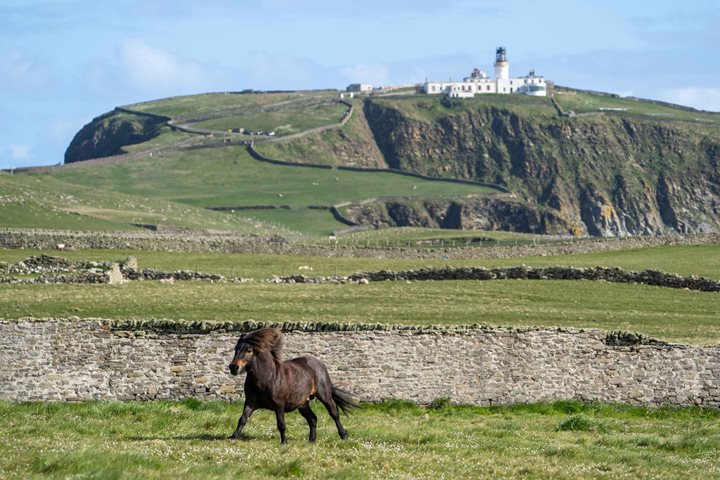We arrived early this morning just off Inis Mór, one of the famous Aran Islands on the west coast of Ireland. Celebrated over the centuries in song, poem, play, and film, it is renowned for its elemental beauty. Here rock, sky, and sea combine to mesmerize. The island is a karst landscape with large expanses of exposed carboniferous limestone at every turn. One of the highlights of our explorations was a visit to the ancient stone fort of Dun Aengus. Archaeological excavations here in the 1990s revealed intermittent occupation spanning two and a half millennia, from circa 1,500 BC to 1,000 AD. Covering 14 acres, the site has a commanding view of a large portion of the island. The incessant pounding of waves 300 feet below was clearly audible.
Tiny fields bound by dry-stone walls are a characteristic cultural feature of the island. The original inhabitants, who arrived here centuries ago, created much-needed soil by combining sand and seaweed collected along the shore and spreading it as a living veneer on the surface of the bare rock. It’s a botanist’s paradise. A wide variety of plants were found, including some rare orchids and the eye-catching blue spring gentian, a flowering plant at home in the European Alps. The island is peppered with ancient monuments. A fascinating site is the Seven Churches, a remnant of an early Christian monastic complex which was founded in the 6th century and endured for over 700 years.
As we were enjoying lunch, National Geographic Explorer made its way toward Liscannor, a small western-seaboard village that was the departure point for our afternoon activities. A coastal walk along the majestic Cliffs of Moher focused on the rich array of seabird species that come ashore here each spring to breed. Consisting of alternating layers of 280-million-year-old sandstone and shale that rise in places to more than 600 feet, they were known in Medieval times as the Great Wall of Thomond, referencing an ancient name for this part of County Clare. Another group explored the hidden, subterranean world of the nearby limestone country with a visit to Doolin Cave. An archaeologically minded group explored the beautiful Burren—an extensive karst limestone area which boasts an impressive array of field monuments from Ireland’s prehistoric past. These include Poulnabrone, a Neolithic portal tomb or dolmen, which was built almost 6,000 years ago by an early farming community to house their dead. The hedgerows and fields were awash with the white flowers of the whitethorn or May bush. It was deemed to be extremely unlucky to bring the blossoms of this tree into one’s home, and in Irish folklore, the whitethorn is the tree that belongs to the little people or fairy folk, who any sensible person would avoid upsetting.







